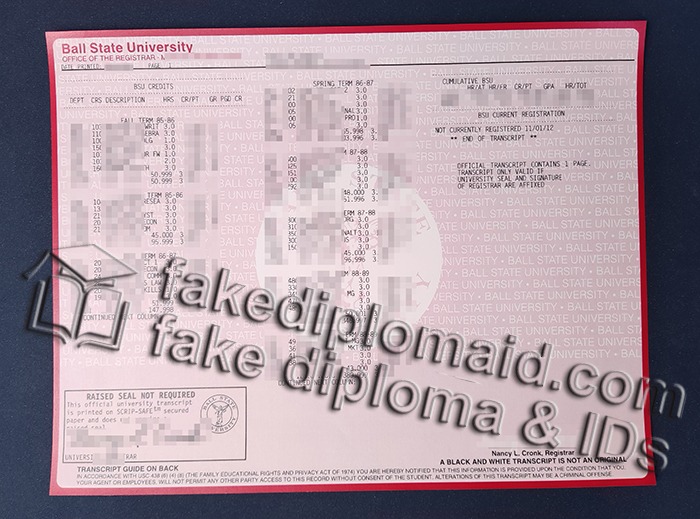
How much to buy a fake Ball State University transcript? Can I buy a fake Ball State University transcript quality? How long to buy a fake BSU transcript? Order a fake Ball State University diploma, buy fake BSU degree online. Ball State University (Ball State, State or BSU) is a public research university in Muncie, Indiana. It has two satellite facilities in Fishers and Indianapolis.
The location of today’s Ball State University had its start in 1899 as a private university called the Eastern Indiana Normal School. The entire school, including classrooms, a library, and the president’s residence were housed in what is today’s Frank A. Bracken Administration Building. The one-building school had a peak enrollment of 256 and charged $10 for a year’s tuition. It operated until the spring of 1901, when it was closed by its president, F.A.Z. Kumler, due to lack of funding. A year later, in the autumn of 1902, the school reopened as Palmer University for the next three years when Francis Palmer, a retired Indiana banker, gave the school a $100,000 endowment.
Between 1905 and 1907, the school dropped the Palmer name and operated as the Indiana Normal College. It had two divisions, the Normal School for educating teachers and the College of Applied Sciences. The school had an average enrollment of about 200 students. Due to diminishing enrollment and lack of funding, school president Francis Ingler closed Indiana Normal College at the end of the 1906–1907 school year. Between 1907 and 1912, the campus sat unused.
In 1912, a group of local investors led by Michael Kelly reopened the school as the Indiana Normal Institute. To pay for updated materials and refurbishing the once-abandoned Administration Building, the school operated under a mortgage from the Muncie Trust Company. Although the school had its largest student body with a peak enrollment of 806, officials could not maintain mortgage payments, and the school was forced to close once again in June 1917 when the Muncie Trust Company initiated foreclosure proceedings.
Recognizing the college’s expanding academic curriculum and growing enrollment (10,066 students), the General Assembly approved renaming the school to Ball State University in 1965. Most of the university’s largest residence halls were completed during this period of high growth, including DeHority Complex (1960), Noyer Complex (1962), Studebaker Complex (1965), LaFollette Complex (1967), and Johnson Complex (1969). Academic and athletic buildings, including Irving Gymnasium (1962), Emens Auditorium (1964), Cooper Science Complex (1967), Scheumann Stadium (1967), Carmichael Hall (1969), Teachers College Building (1969), Pruis Hall (1972), and Bracken Library (1974), also expanded the university’s capacity and educational opportunities.





